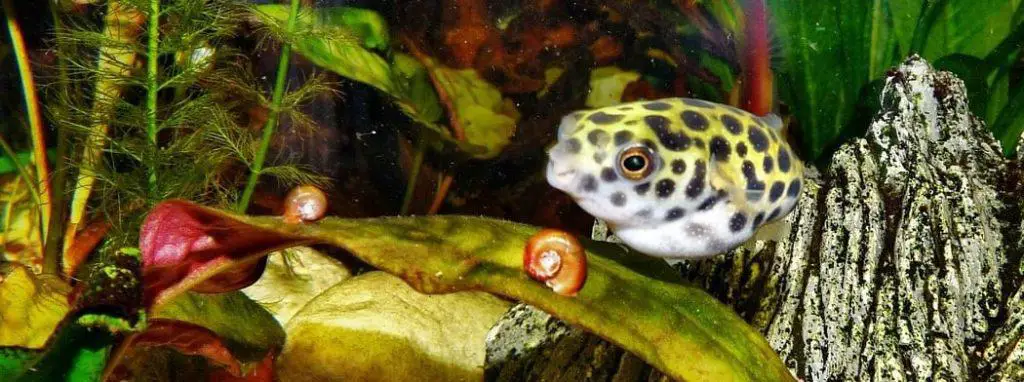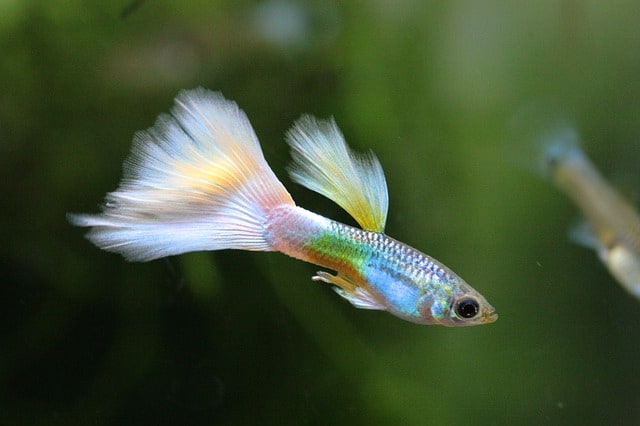As an aquarist, I understand the excitement of starting a new fish tank and adding new fish. But it’s important to remember that different fish have different care requirements and may not always be compatible with each other. This is especially true when choosing tank mates for pea puffers.
Pea puffers, also known as pygmy puffers or dwarf puffers, are small, freshwater fish native to parts of Africa and Asia. They are known for their unique personality and inquisitive nature and can make great pets for the right fish keeper. However, they can also be quite territorial and may become aggressive towards larger or more boisterous tank mates.
That’s why choosing the proper companions for your pea puffer is essential. By selecting compatible tank mates, you can create a healthy and harmonious community tank that allows all of your fish to thrive. On the other hand, choosing incompatible tank mates can lead to stress, aggression, and even death for your pea puffers and other fish.
So if you’re considering adding a pea puffer (or any other fish) to your tank, it’s essential to do your research and choose tank mates that are compatible with their care requirements and personality. This will help ensure your fish’s long-term health and happiness.

What Are The Best Tank Mates for Dwarf Puffers?
In general, dwarf puffers are peaceful fish and do well with other smaller, peaceful species.
Tank mates for dwarf puffers include other small fish like tetras, rasboras, livebearers, and bottom dwellers like Corydoras.
It’s vital to avoid larger or more aggressive fish and those with very different care requirements, as these may cause stress or aggression in your dwarf puffers.
I have experience with a variety of different fish species and can suggest some suitable tank mates for pea puffers.
Here are some suitable tank mates for pea puffers:
- Tetras: Tetras are small, peaceful fish in various colors and patterns. They are a good choice for a pea puffer tank as they are small enough to avoid being seen as a threat and tend to stay out of the way of more dominant fish.
- Rasboras: Rasboras are another small, peaceful fish that make good tank mates for pea puffers. They are hardy and adaptable and come in a range of colors.
- Livebearers: Fish like guppies, mollies, and platies are livebearers, which means they give birth to live young rather than laying eggs. These fish are generally peaceful and make good tank mates for pea puffers.
- Corydoras: Corydoras, or “cory” cats, are small, bottom-dwelling fish known for their peaceful nature and ability to help clean up excess food and waste in the tank. They are a good choice for a pea puffer tank as they are small enough to avoid being seen as a threat and tend to stay out of the way of more dominant fish.
- Otocinclus: Otocinclus, or “oto” cats, are small, peaceful fish known for their ability to help control algae in the tank. They are a good choice for a pea puffer tank as they are small and non-threatening and tend to stay out of the way of more dominant fish.
- Ghost shrimp: Ghost shrimp are relatively small, transparent shrimp popular among aquarists. They are peaceful and make good tank mates for pea puffers, as they are small and non-threatening. They can also help to clean up excess food and waste in the tank. Some pea puffers see small shrimp as prey and might nib at them. Ghost shrimp tend to be larger than dwarf most dwarf shrimp and larger than dwarf puffers would typically attack, but I advise monitoring the situation closely to be sure they are left alone. I have a more in-depth article about Puffers and shrimp here.

- Nerite snails: Nerite snails are peaceful snails known for their ability to help control algae in the tank. They could be a good choice for a pea puffer tank as they are small, non-threatening, and tend to stay out of the way of more dominant fish. That said, it wouldn’t be my first choice to put them together. Dwarf puffers love to eat snails; Nerite snails are usually larger than their usual prey but still might attack. Monitor the situation closely if you are set on this combo.
- Glass catfish: Small, peaceful fish known for their transparency and delicate appearance. They are a good choice for a pea puffer tank as they are small and non-threatening and tend to stay out of the way of more dominant fish.
- Ember tetras: Ember tetras are small, peaceful fish known for their bright red coloration. They are a good choice for a pea puffer tank as they are small and non-threatening and tend to stay out of the way of more dominant fish.
- Endlers: Endlers are small, peaceful fish that are similar in appearance to guppies. Technically I covered them under the livebearer section, but I like them enough to give them their own mention. They are a good choice for a pea puffer tank as they are small and non-threatening and tend to stay out of the way of more dominant fish.
- Mosquito rasboras: Mosquito rasboras are small, peaceful fish known for their delicate appearance and shimmering scales. They are a good choice for a pea puffer tank as they are small and non-threatening and tend to stay out of the way of more dominant fish.
It’s important to note that these are just a few examples, and there may be other suitable tank mates for pea puffers, depending on your specific setup and needs. As always, it’s essential to do your research and choose tank mates that are compatible with your pea puffers’ care requirements and personality.
Tips for a Successful Pea Puffer Community Tank
Here are a few tips to help you create and maintain a successful pea puffer community tank:
- Add tank mates gradually: When introducing new fish to your tank, it’s essential to do it slowly to allow the pea puffers (and other fish) time to adjust. This can help prevent any sudden changes that may cause stress or aggression.
- Regular water changes and proper filtration: Proper water quality is essential for your fish’s health and happiness. Do frequent water changes and use a high-quality filter to maintain good water conditions.
- Keep an eye on tank dynamics: It’s essential to pay attention to the interactions between your pea puffers and their tank mates. If you notice any aggressive or stressed behavior, be prepared to remove the offending fish to prevent conflicts from escalating.
Following these tips and carefully selecting compatible tank mates, you can create a healthy and harmonious community tank for your pea puffers and other fish.

The Basics of Pea Puffer Care
Here is an overview of the basic care requirements for pea puffers:
Tank size: Pea puffers are small fish, but they still need plenty of room to swim and explore. A 20-gallon tank is a good minimum size for a group of pea puffers, but larger tanks will provide even more space and create a more stable environment.
Water parameters: Pea puffers are sensitive to changes in water quality and require specific water parameters to thrive. They prefer a pH between 6.5 and 7.5 and a temperature between 72 and 78 degrees Fahrenheit. It’s essential to test the water to maintain these parameters regularly.
Diet: Pea puffers are carnivores and require a varied diet to stay healthy. They feed on small invertebrates like snails, worms, and crustaceans in the wild. In captivity, you can feed them a small frozen or freeze-dried diets, such as brine shrimp, daphnia, and bloodworms. It’s essential to avoid overfeeding, as pea puffers are prone to obesity.
Conclusion
Choosing compatible tank mates for pea puffers is essential to being a responsible fish keeper.
By carefully selecting compatible tank mates for your pea puffers, you can create a healthy and harmonious community tank that allows all your fish to thrive. Suitable tank mates for pea puffers include smaller, peaceful fish and invertebrates like shrimp and snails. It’s vital to avoid larger or more aggressive fish and those with very different care requirements, as these may cause stress or aggression in your pea puffers.
Maintaining a healthy community tank is also essential for the well-being of your pea puffers and other fish. Regular water changes and proper filtration are vital to keeping the water clean and healthy. It’s also important to pay attention to tank dynamics and be prepared to remove any aggressive or stressed fish as needed.
By following these guidelines and taking good care of your pea puffers and their tank mates, you can create a successful and enjoyable community tank that all your fish will enjoy.


